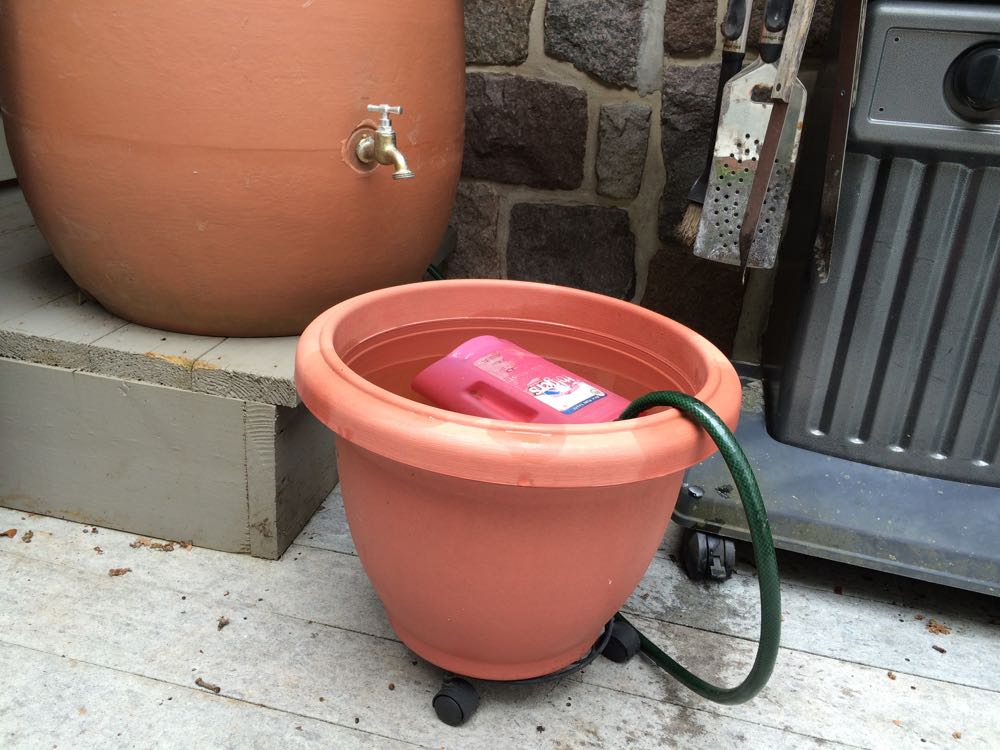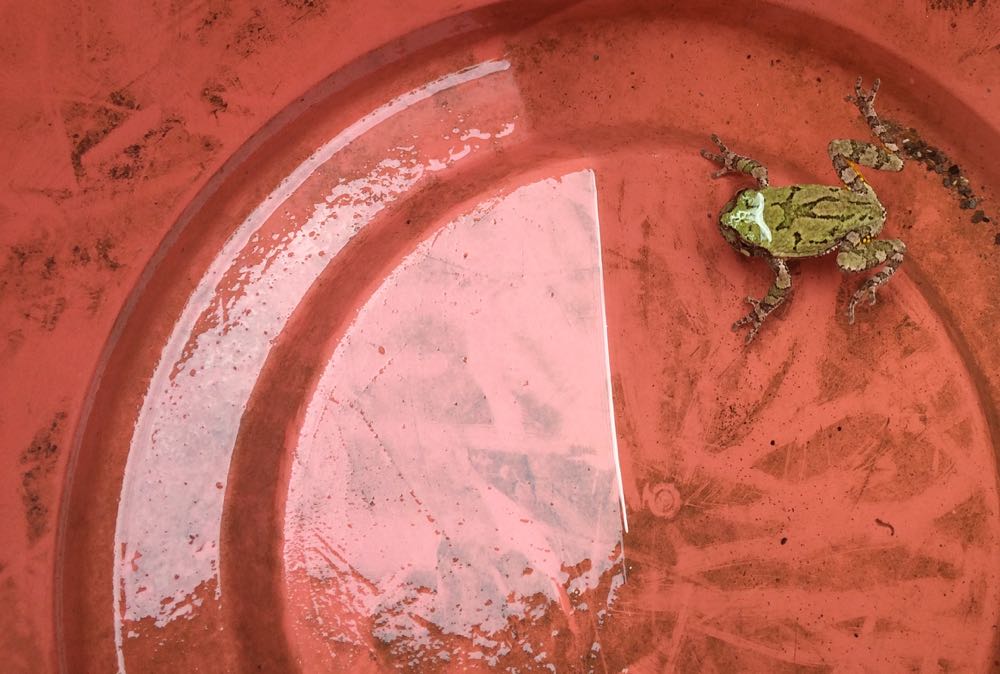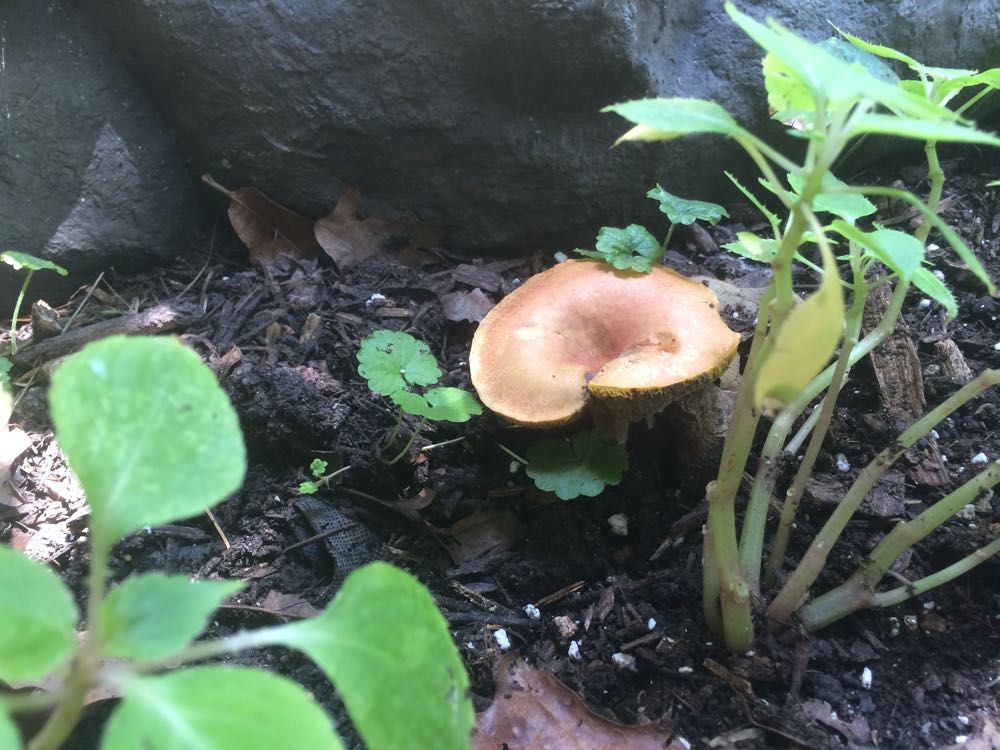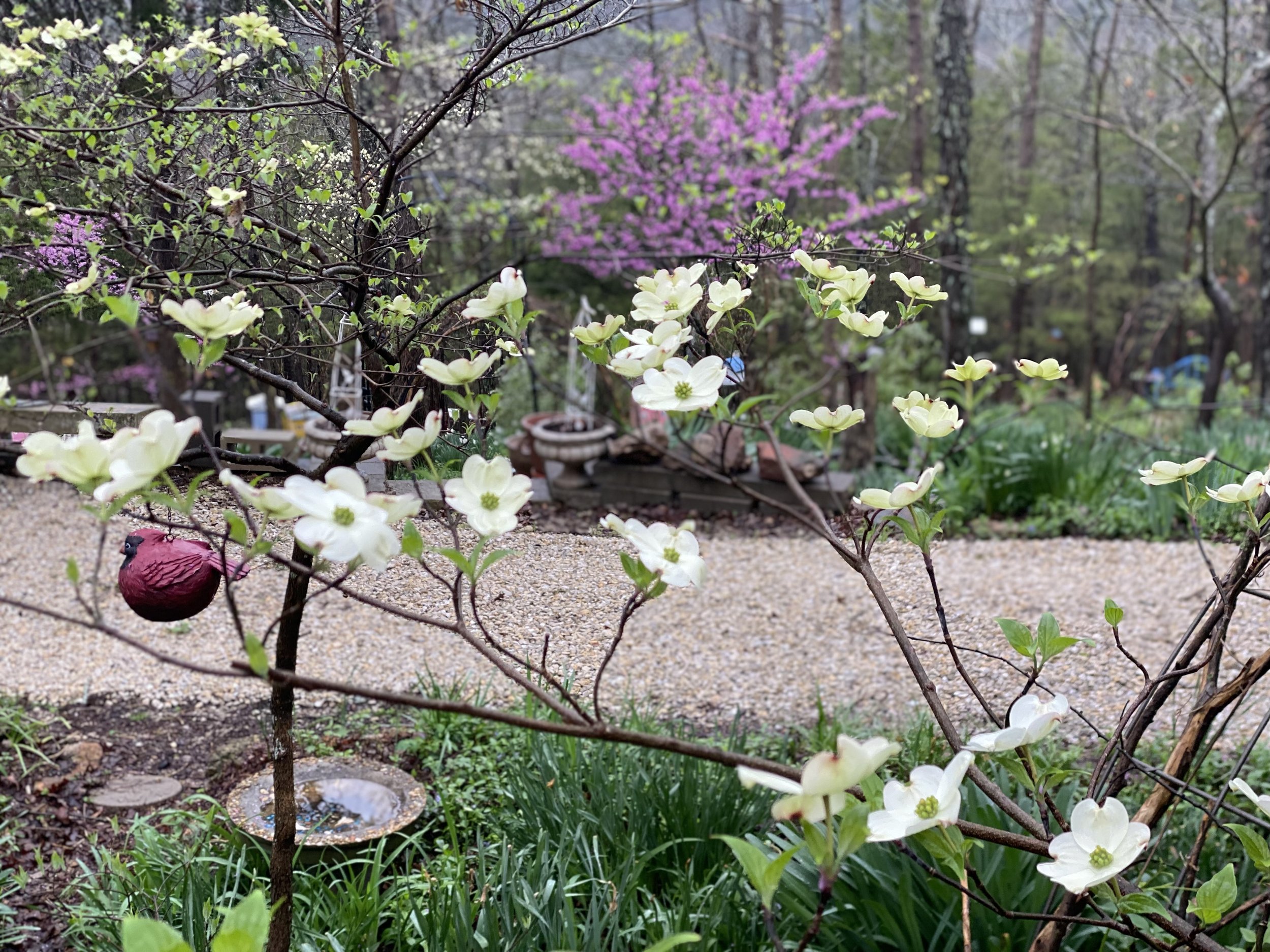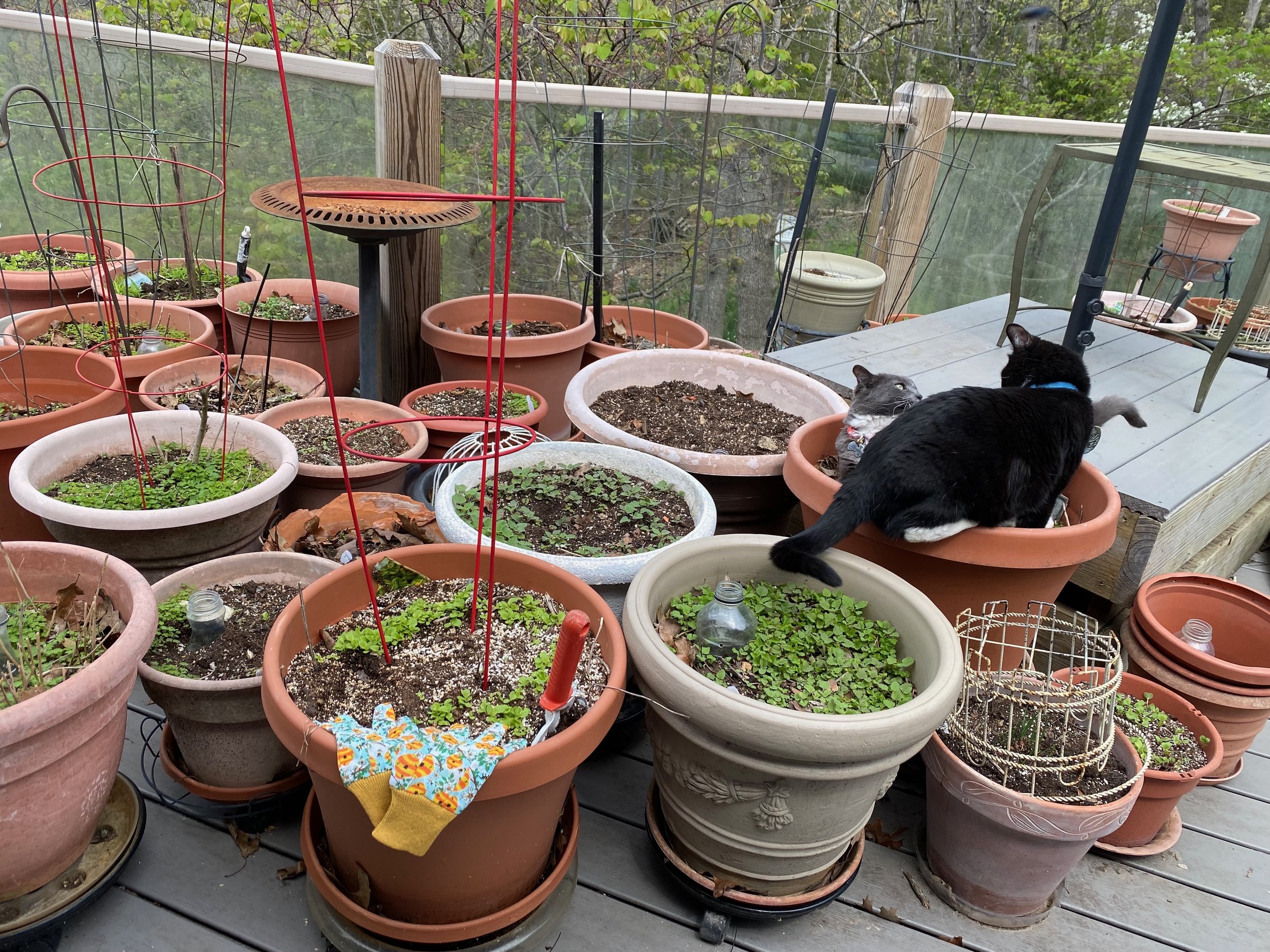Water on Wheels
/A plastic pot on wheels helps me move rain water from my rain barrel to my potted plants.
Water on Wheels
This is such an easy fix and "a wonder for people who haven't thought about it." Or so a friend tells me!
When we have rain barrels collecting rain water, we may need a way to get the rain water to plants. Watering cans are a traditional choice. For my deck plants, I use something better, a large plastic planter on castors to move rain water from my rain barrel around the deck.
The rain barrel is too heavy to put on castors so I settled for a large plastic pot I can easily move. Adding the castors makes moving the plastic pot full of water easier and I can reach the plants at the far corners.
I use a shallow round planter with a hole as a lid to prevent wildlife and bees from falling in.
A smaller, plastic coffee can helps me scoop out the rain water. See those little bottles sunk in the pots? I pour the rain water into those bottles so the plant roots are kept moist.
Then I use a shallow round planter with a hole in it as a lid to keep wildlife and bees from falling in.
A Missouri spring peeper decided to go for a swim in the bottom of the planter on wheels.
Works beautifully. Well, apparently except for frogs.
How do you get rain water from your rain barrels to your plants?
Charlotte

